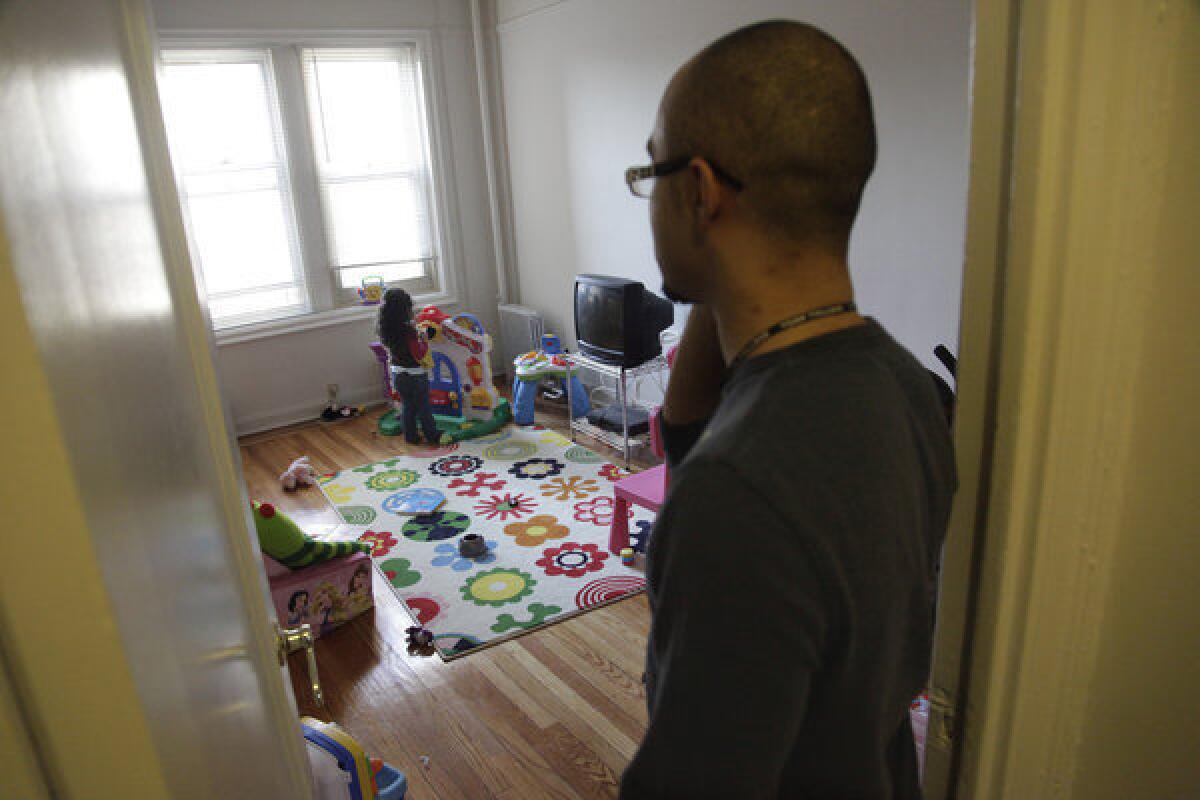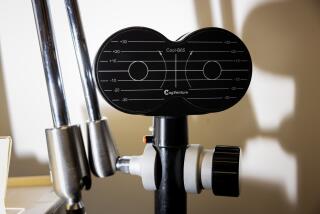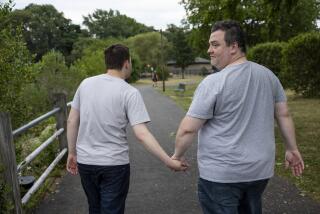Autism rates rising sharply, CDC reports

Federal health authorities have significantly raised their estimate of the prevalence of autism in children, concluding in a new study of 8-year-olds that 1 in 88 has some form of the disorder.
For the analysis, released Thursday, researchers scoured tens of thousands of health and special education records in 14 states, looking for an autism diagnosis or the symptoms that would add up to one. It is the latest in a series of studies by the U.S. Centers for Disease Control and Prevention showing autism rates climbing dramatically over the last decade.
The previous estimate was 1 in 110.
The new figure, based on 2008 data, is sure to fuel debate over whether a growing environmental threat could be at work. But autism researchers around the country said the CDC data — including striking geographic and racial variations in the rates and how they have changed — suggest that rising awareness of the disorder, better detection and improved access to services can explain much of the surge, and perhaps all of it.
Some experts questioned the validity of relying on records to estimate the disorder’s true prevalence.
David Mandell, an autism expert at the University of Pennsylvania, said the CDC’s numbers primarily reflect the degree to which the diagnosis and services have taken hold in different places and among different groups.
“As the diagnosis is associated with more and more services, this becomes a less and less rigorous way to determine the prevalence of autism,” he said, referring to the CDC’s methods.
The federal agency found that Utah, which has widespread screening programs, had the highest rate—1 child in 47. The state was closely followed by New Jersey, which prides itself on its autism services, at 1 in 49.
At the bottom was Alabama, one of the poorest states in the country. Its autism rate fell 20% between 2006 and 2008 — from 1 in 167 to 1 in 208.
CDC officials acknowledged the limitations of their analysis. In surveillance areas where researchers had access only to health records, and not school records, prevalence estimates were generally lower. Including the capital city of Raleigh in North Carolina’s surveillance area dramatically increased the state’s rate.
“Our study really is more of a study of demographic differences and population differences,” said Jon Baio, a CDC epidemiologist and principal investigator on the report.
The researchers hope, however, that the study will draw attention to the need for more vigorous screening early in children’s lives. Research shows that early intervention offers autistic children the best long-term prospects
More than a fifth of children identified as autistic by the CDC had no autism diagnoses in their records.
Dr. Coleen Boyle, director of the CDC’s National Center on Birth Defects and Developmental Disabilities, said that children “still aren’t being identified enough.”
Nobody knows what causes autism, and there is no blood test or other biological marker. It is diagnosed by its symptoms — social and communication difficulties starting in early childhood as well as repetitive behaviors or abnormally intense interests — and has come to include a wide range of children. Ultimately, a diagnosis comes down to clinical judgment.
In response to rising concern over skyrocketing diagnosis rates in the 1990s, the CDC set up a network of surveillance sites across the country. Researchers do not examine children but instead periodically review records of 8-year-olds.
In its first analysis, using data from 2000, the CDC estimated that 1 in 150 children had some form of the disorder. The latest estimate of 1 in 88 is already being touted as evidence that something in the environment is driving up cases.
“Autism is now officially becoming an epidemic in the United States,” Mark Roithmayr, president of the advocacy group Autism Speaks, said in a news conference with CDC officials Thursday.
Others noted that as autism awareness has grown, healthcare providers and school officials are more likely to label a child autistic or note autistic symptoms in the documentation that the CDC researchers rely on.
In all, the CDC identified 3,820 children with some form of autism, out of a total of 337,093 in the surveillance areas. As has been previously established, boys were much more heavily affected: The rate was 1 in 54, compared with 1 in 252 girls.
The rate for white children was 1 in 83, compared with 1 in 127 for Latinos and 1 in 98 for African Americans — but the data show those minorities have been closing the gap.
“What we’re looking at is mostly due to practices and infrastructure and culture rather than some underlying biological phenomenon,” said Dr. Daniel Geschwind, an autism expert at UCLA, explaining the patterns.
In a series of stories last year examining the role of such factors, The Times analyzed special education and developmental services data in California and found wide variation in autism rates and allocation of services across the state. The CDC analysis did not include data from California.
In a study published last year, a research team screened tens of thousands of children in a suburb of Seoul and found 1 in 38 met the current definition for some form of autism.
Two-thirds had never been identified with autism or any other disability. Had the researchers used the CDC methodology, they would have missed those cases, said Dr. Young-Shin Kim, the Yale psychiatrist who led the study.
“Seek and you shall find,” she said, referring to how autism has largely remained in hiding.
Young-Shin and many other researchers see the boom in diagnosis as a positive step, a chance to bring help to children who struggle socially. But the South Korea study also became Exhibit A for some researchers that the definition of autism left too much room for interpretation.







